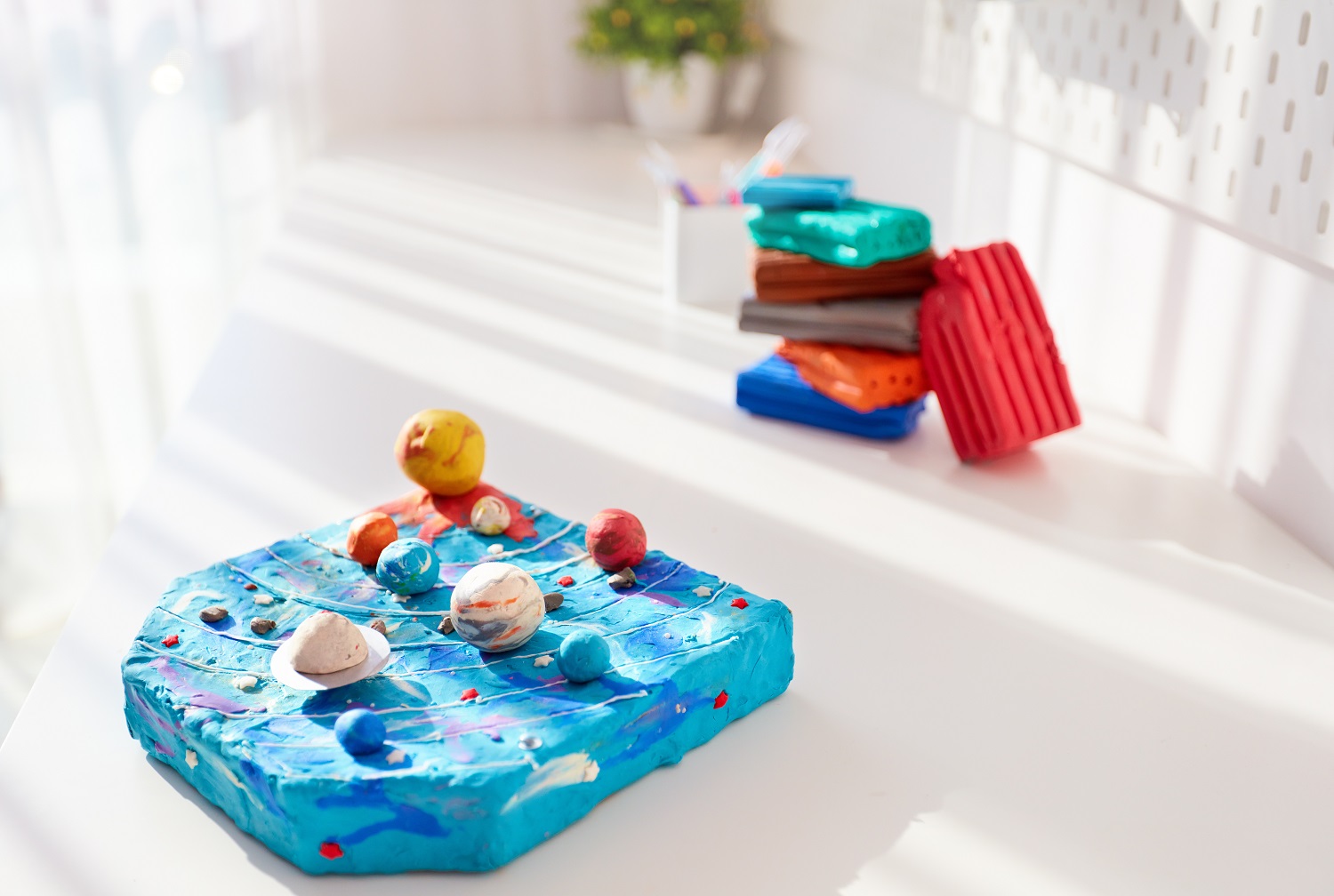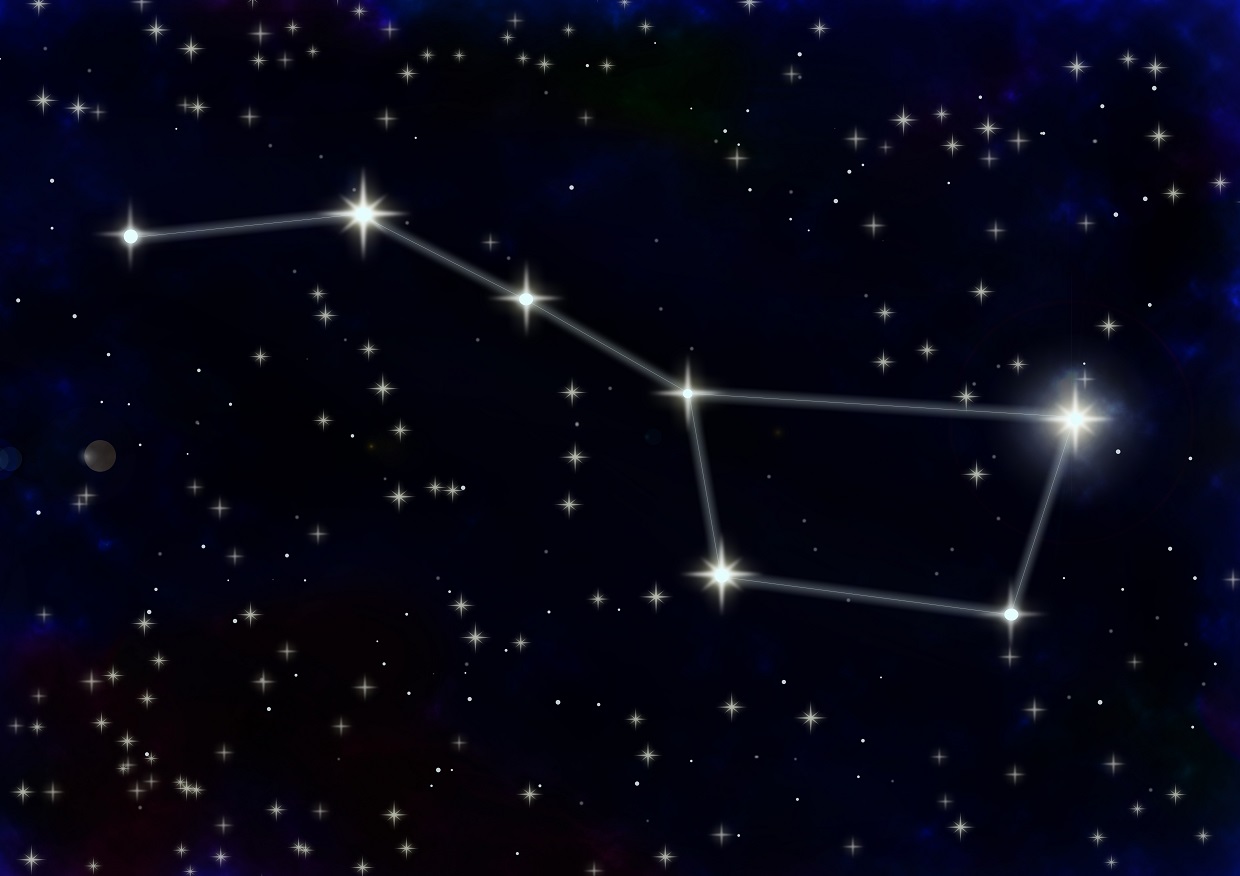When it comes to Science, Technology, Engineering, Arts and Mathematics (STEAM) activities for elementary school, the “A” is sometimes left out of the equation. Try these space-themed activities to bring out the artistic side of your students while tapping into their natural fascination with stars and planets.
Learn about the planets by making wearable art.
Grade 4–5+

The planets of our solar system are not only fascinating—they’re unique and beautiful! Students can flex their creativity while learning about the different planets with this jewelry-making activity.
MATERIALS
- Sculpey polymer clay (or similar), in a variety of colors to match the planets
- Photos of each planet
- Toothpicks (or another implement that can make holes in clay)
- Jewelry cord or twine (enough to make each student a necklace or bracelet)
- Oven
- Ruler
DIRECTIONS
- Split the class into small groups and assign each a planet. You can add the Sun and Earth’s moon if you have more groups than planets.
- Give each group a photo of their planet and Sculpey modeling clay in corresponding colors.
- Using the photos for reference, each group will design and make spherical clay beads that look like their planet. The beads will be strung together to form solar system jewelry. While the vast size variations between the planets don’t allow for accurate scale in this format, you can give the students measurements for the beads that show their approximate size in relation to each other. (For example, Earth will be larger than Venus but smaller than Neptune.)
- Each group will need to make enough beads for every class member to have one. Some extras are a good idea in case of breakage.
- When all the beads are formed, help the students make holes through each using toothpicks. The holes should be big enough for the cord or twine to fit through.
- Have the students help you put the beads onto baking sheets.
- Bake the beads according to the clay package directions. This can take a long time, so you may need to split the activity over two or three days.
- When the beads are ready, bring them back to the classroom. Set up an assembly line with stations of planet beads, in order of their distance from the Sun. Students can help by identifying the correct order.
- Have the students line up to go through the stations. At the first station, have the students measure a length of jewelry cord or twine to fit around their wrist as a bracelet, or loosely around their neck as a necklace. Cut to fit and tie a large knot at one end. (You can also pre-cut and knot if you prefer.)
- Students go through the stations, stringing a bead at each. They may need help at the end fastening or tying off their jewelry.
- Each student will have a necklace or bracelet with a solar system of beautiful beads!
Variation: You can do this same activity to teach about Earth’s inner layers. Instead of different planets, students can make the same bead with blue-and-green colors on the outside and different color layers inside. Carefully cut the beads in half before making holes and baking.
Bring the constellations to life with 3D marshmallow models.
Grade 2–5

Every society in humankind’s history has named and told stories about the groups of stars high above us. Making constellation models is not only a great STEAM activity but can also easily fit in with a history unit on ancient civilizations.
This is a basic version of the activity. Space Foundation offers a complete lesson plan, including extensions, here.
MATERIALS
For each student:
- Big Dipper worksheet w/ pattern (available free here)
- Scissors
- 4” x 6” piece of cardboard
- Glue stick
- 7 toothpicks (pre-cut if working with younger students)
- Ruler (to measure toothpicks for cutting, if working with older students)
- 7 marshmallows
- Push pin or thumbtack (adult use only)
DIRECTIONS
- Explain to students that they will construct a scale model of the Big Dipper, one of the most familiar shapes in the sky. It is part of the constellation Ursa Major—the “Great Bear!” They will learn that even though the stars in the Big Dipper look like a flat pattern to us here on Earth, the stars are very far away from each other. Each star in the Big Dipper also has its own name.
- Pass out the materials and remind students that the marshmallows aren’t for eating! You may want extra marshmallows to enjoy afterward.
- Have the students cut out the Big Dipper pattern, or you can pre-cut if you prefer for younger students.
- Have the students spread glue on the back of the Big Dipper pattern and then press it down onto the cardboard.
- You or a helper adult should use the thumbtack to make a small hole in each of the stars on the patterns.
- Using the worksheet as a guide, the students should measure and cut the toothpicks to match the lengths needed for each star (you can pre-cut for younger students). Note: the star Megrez requires a full-length toothpick.
- Instruct the students to stick the sharp end of the toothpick to its matching star, and stick a marshmallow on the other end.
- The constellation is done! Instruct your students to observe their models from different angles. How is it different from the “flat picture” they see in the sky?
- Explain to the students that the constellations we see from Earth are unique to us and our perspective. If you were standing on Mars, the same group of stars would look completely different!
Variation: Have the students create their own constellations. It can be a mythical creature, a modern-day animal, a plant or flower, or anything meaningful to them. For a creative writing assignment, have students create the story behind their constellation in the style of an ancient myth!
Looking for more ways to get your class excited about STEAM?
Check out our Programs for Teachers for STEAM lesson plans, grant lists and professional development opportunities. Our Students page includes programs, STEAM activities and more for you to explore.